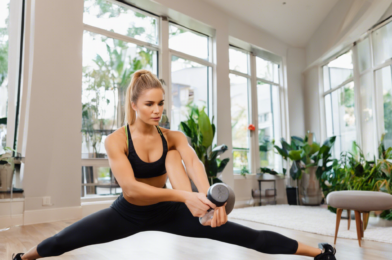Staying energized throughout the day can be a challenge, especially if you’re trying to make healthy choices. Healthy snacks are key to maintaining stable energy levels and ensuring you’re consuming a balanced diet. Here are some nutritious options to keep you fueled and satisfied from morning to night!
First and foremost, let’s talk about protein. Protein-rich snacks are essential for keeping your energy levels stable. Hard-boiled eggs are an excellent source of protein and can be prepared in advance, making them a convenient option to grab on the go. Natural peanut butter or almond butter with celery sticks or apple slices is another tasty, protein-filled choice. If you’re looking for something more substantial, a cup of Greek yogurt with chopped nuts and berries provides an extra boost of protein and healthy fats to keep you satisfied.
Nuts and seeds are also fantastic sources of energy. A handful of almonds, pistachios, or walnuts can provide a quick boost and help tide you over until your next meal. For an extra treat, try making your own trail mix with a variety of nuts, seeds, and dried fruit. Just be mindful of portion sizes, as these snacks can be calorie-dense.
Dairy options also offer a good source of protein and calcium. A small block of cheese with wholegrain crackers or a glass of milk with a homemade smoothie can be a great way to refuel. If you’re dairy-free, try a calcium-fortified soy milk or a dairy alternative with added protein.
Let’s not forget about produce! Fresh or frozen vegetables are always a healthy choice. Sliced peppers, carrots, or cucumbers with hummus provide a crunchy and nutritious snack. Frozen grapes can also be a refreshing treat, and they’re a great way to satisfy your sweet tooth.
For a more substantial snack, why not try making your own energy balls? Combine rolled oats, peanut butter, honey, and your choice of add-ins like shredded coconut, mini chocolate chips, or dried fruit. Roll the mixture into bite-sized balls and store them in the fridge for a quick and healthy snack whenever you need it.
Staying hydrated is also key to maintaining energy levels. Water should be your go-to, but herbal teas and fresh fruit or herb-infused water can also help mix things up and make increasing your fluid intake more enjoyable.
A healthy snack in the morning can be a piece of whole-grain toast with avocado and a sprinkle of salt and chili flakes. This snack provides healthy fats and carbohydrates to keep you going until lunch.
Oatmeal is another excellent choice that can be tailored to your taste. Try making overnight oats by mixing rolled oats with your choice of milk, yogurt, or both. Add in some chia seeds for extra nutrients and texture, and top with fresh or frozen fruit, a drizzle of honey, or a sprinkle of cinnamon.
For an afternoon snack, a smoothie made with banana, spinach, milk, and peanut butter will keep you full and energized for the rest of the workday. If you’re more of a savory snacker, roasted chickpeas are a wonderful option. Simply drain and rinse a can of chickpeas, toss them in olive oil and your favorite spices, and bake until crispy.
Lastly, don’t be afraid to get creative and experiment with different combinations of foods to find what works best for your taste buds and energy needs! Preparing snacks in advance and keeping them easily accessible will also help you make healthier choices and stay energized throughout the day.
Enjoy these healthy snack ideas, and feel free to share your own go-to energizing treats in the comments!






